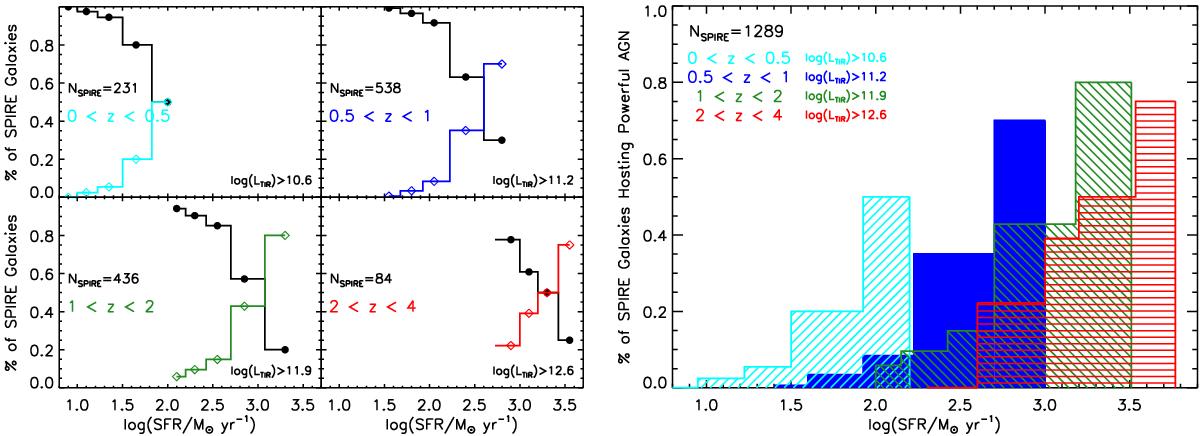Fig. 18

Left: fraction of galaxies hosting a powerful AGN as a function of LTIR-derived SFR in volume-limited samples of SPIRE galaxies in four different redshift bins. Only those galaxies detected at >3σ in at least one of the three SPIRE bands are plotted. Solid colored lines show the fraction of galaxies at any given SFR (LTIR) bin that host a powerful AGN, solid black lines show the fraction of SPIRE galaxies with that SFR which do not host a powerful AGN. For all redshifts, the fraction of powerful AGN increases monotonically with increasing SFR. Galaxies at the highest SFR must quench rapidly in order to avoid violating the observed evolution in the stellar mass function (see Sect. 5.2.1). The presence of an extremely powerful AGN in the majority of galaxies undergoing extreme starbursts provides a natural and plausible candidate for quenching. Right: similar to the left panels but employing SPIRE volume-limited samples at all redshifts. Starting from high redshift, the most vigorous star-forming galaxies at any given redshift are unobserved in samples at subsequently lower redshifts. Such galaxies are also the galaxies with the highest fraction of AGN in any given redshift bin. The fraction of powerful AGN hosted by moderately powerful ULIRGs (i.e., log (SFRTIR) ~ 2.8) increases by a factor of ~3 from the highest to lowest redshifts, a phenomenon which is used to argue for the presence of downsizing amongst dusty starburst galaxies driven, at least in part, by powerful AGN activity.
Current usage metrics show cumulative count of Article Views (full-text article views including HTML views, PDF and ePub downloads, according to the available data) and Abstracts Views on Vision4Press platform.
Data correspond to usage on the plateform after 2015. The current usage metrics is available 48-96 hours after online publication and is updated daily on week days.
Initial download of the metrics may take a while.




